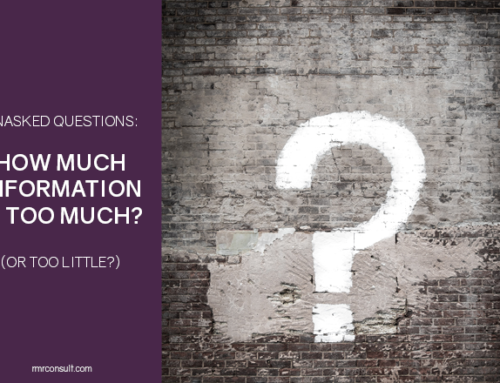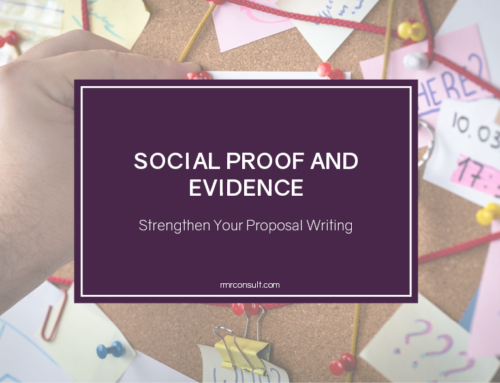3 Things Every Proposal Win Theme Needs
You’ve just been given the green light on a proposal. You sit down to start writing it, fingers hovering over the keyboard, and… where do you begin? With the cover letter? An outline? The first question in the first section of the RFP? Do you have a strategic plan of attack or a proposal win theme?
If you answered “no” to that last question, then we need to talk, my friend. Proposal win themes are mission-critical. They’re the glue that holds everything in your proposal together. They’re the golden nuggets that hook your client in and make them want to read your proposal.
Can you really write a proposal that someone wants to read?
Yes, actually. You can.
What is a Proposal Win Theme?
A win theme is your guiding strategy, your differentiator unique to this particular opportunity. It unites your USP (unique selling proposition) with the client’s biggest concerns, proving that your firm is not only the right one for the job, it’s the only one for the job.
Remember when we talked about hook, highlight, and hustle in proposal cover letters? The three thoughts you want to highlight in your cover letter are your win themes, and they should be carried throughout your entire proposal.
The Three Things Every Proposal Win Theme Needs
Your win themes show that you understand project challenges (client pressure points) and have the experience to deal with those challenges. Your experience is a “feature” of your company, like your portfolio, thought leadership, or a system or software you use during a project. Taking this one step further, your win theme positions your experience as a benefit the client can’t live without.
So, a proposal win theme boils down to:
- Identified Pressure Point
- Your Experience
- Problem-solving Benefit
1. Identified Pressure Point
These pressure points are issues the client may face over the course of the project. In our win theme, we want to present these issues as more optimistic ‘challenges’ and offer solutions to overcome them.
When brainstorming your challenges, understanding client motivations is essential. Make sure you do as much research as possible before the RFP drops (if possible); talk with the client, ask questions about what they perceive as potential issues, what they envision for the project, etc. The more you know, the more tailored your win theme will be.
Pro-tip #1: Projects don’t have pressure points, people do. Make sure that you’re digging into the human element and looking at the challenges the client will face, not the project.
Pro-tip #2: ‘Budget’ and ‘schedule’ aren’t deep enough problems. Think about what happens if the project goes over budget or isn’t completed on schedule.
2. Your Experience
What makes your firm unique? Is it your people? Your project management system? Your portfolio of award-winning projects?
These are all features of your business – like the specs or stats of your firm. For your win theme, you want to present features of your company that can help alleviate the identified pressure point and solve the client’s problems.
For example, you might tout your extensive personnel resources and ability to add staff to a project to accelerate the schedule if there’s a particularly tight turnaround on the project.
Or maybe you won an award for innovating a new engineering system in a mission critical facility, and the project you’re proposing on could benefit from a similar system.
3. Problem-solving Benefit
You might be tempted to present the challenge in your proposal, rattle off a list of firm features that will be useful for solving that challenge and call it a day.
But if you really want to impress the review committee, you need to connect the dots and tell them why your features are so great.
That is, you need to show them exactly what they’re going to get by selecting your firm.
Let’s put this in perspective. Think about the last time you bought a car. You probably looked at a ton of models, right? At their most basic, all cars have the same components: four wheels, an engine, and a frame. They can all get you from point A to point B. You picked a specific vehicle though, didn’t you? Maybe it was because of a particular feature, like towing capacity, horsepower, or the number of seats.
Guess what? You didn’t pick the car because of that feature.
You picked it because that feature provided a specific benefit. Maybe the towing capacity meant you could hall your boat to the lake, or the horsepower met your speed cravings, or the extra seats could fit your family of seven comfortably.
See where I’m going with this?
Your proposal must present a solution to the challenge – that solution is your proposal promise, and it’s the problem-solving benefit the client will receive from working with you.
Why You Need Proposal Win Themes
Without a win theme, you’re writing a reactive proposal instead of a proactive proposal. Reactive proposals mean you’re just responding to the RFP questions with vague language that won’t resonate with the client. Even if you’re tailoring your template narratives to the project, you’re doing so without a point.
It’s like trying to navigate your way out of the woods without a compass. You might get lucky and wander out, or you might get hopelessly lost.
Let’s not get hopelessly lost, okay?
Let’s find those pressure points and agitate them, so the client knows that you get it.
Not only do you get it, you’ve dealt with it before.
Because you’ve dealt with it before, you offer a unique benefit (being able to solve a problem or attain project goals) that no other company can.








Leave A Comment